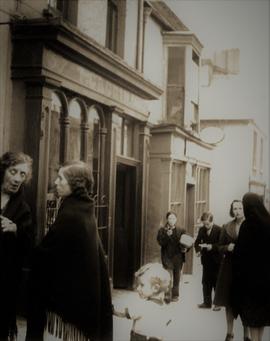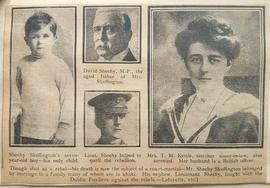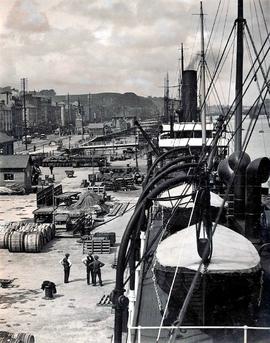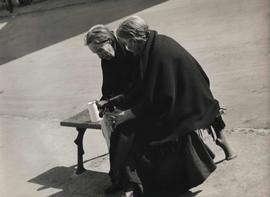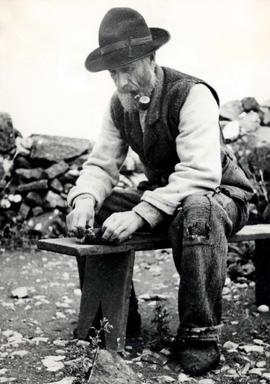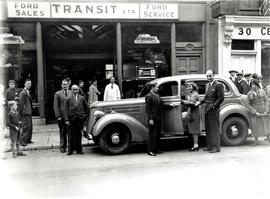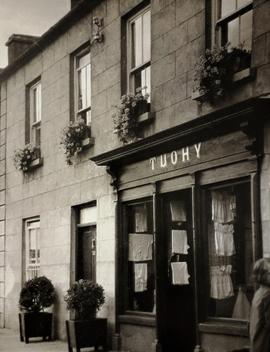- IE CA CP/1/1/2/6/3
- Part
- c.1940
Part of Irish Capuchin Archives
A print titled ‘Small talk on Shandon Street, Cork’. The print is dated to c.1940. From the eighteenth century onward, Shandon Street was known as major site for commercial activity on the north-side of Cork. Some of the women in the image are wearing a traditional black shawl. Many working-class Irish women survived as street traders, selling fruit, vegetables and second-hand clothing. In Cork they were known as ‘the Shawlies’ because of the distinctive, traditional black shawls they wore on the streets.

